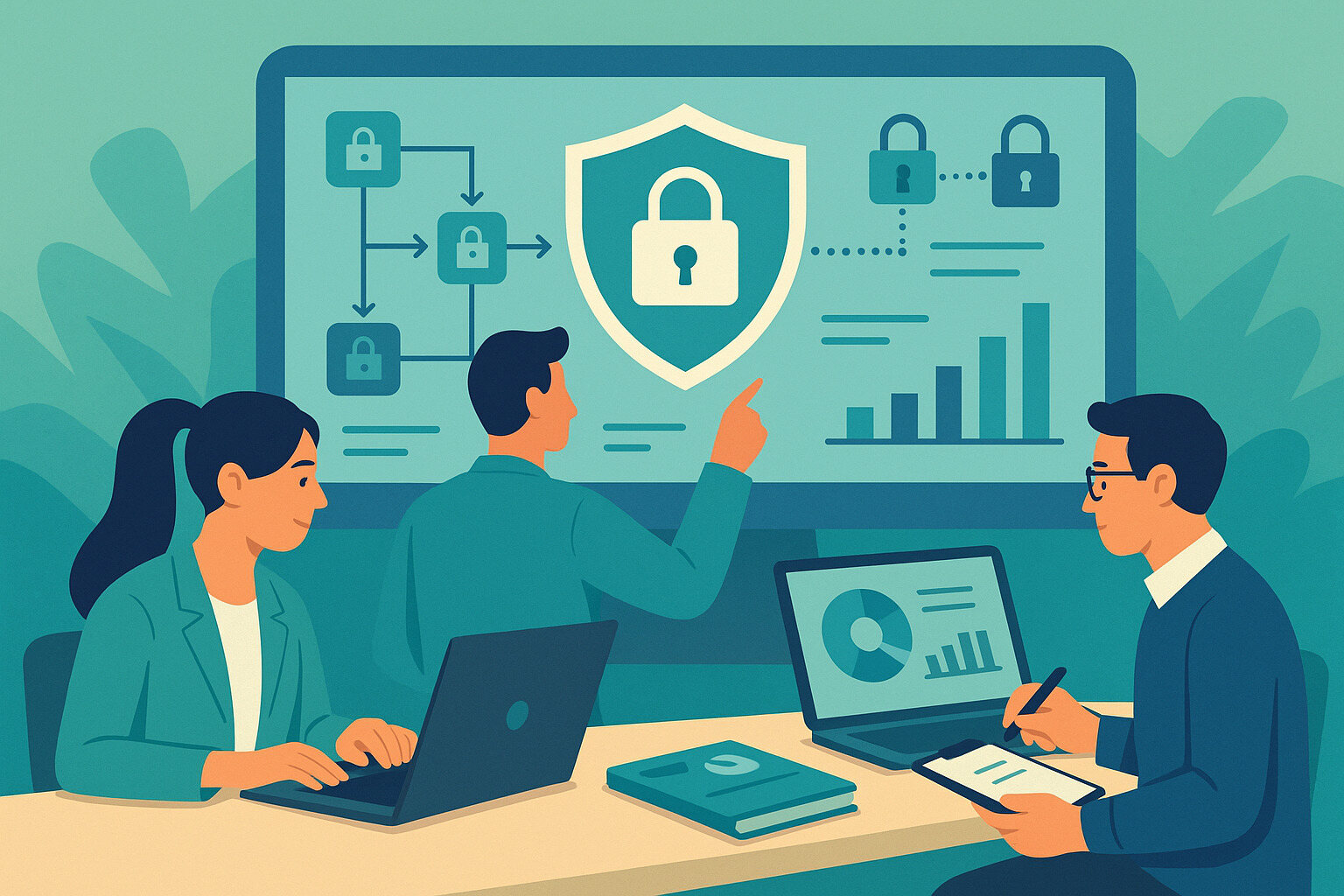
Understanding the Purpose of Data Protection in Integration Systems
Spagic, as a modular integration platform, plays a vital role in managing complex processes across different services and applications. Its use of middleware makes data flow between systems smoother and more manageable. With this level of responsibility, data security must be a constant priority throughout its operations.
Organizations using Spagic often handle sensitive information, ranging from user credentials to business-critical workflows. This puts pressure on the platform to uphold high standards of confidentiality, integrity, and availability. One misstep in data protection can expose systems to risks like leaks, tampering, or service disruptions.
What makes Spagic noteworthy is its ability to adapt through open-source frameworks. While flexibility is a strength, it also brings a shared responsibility. Teams must understand how the platform handles data security natively and where additional measures are needed for full protection.
Core Security Layers Within the Spagic Architecture
At the heart of Spagic’s architecture is its OSGi framework, which provides component-level modularity. Each module, or bundle, operates independently, enabling services to be deployed and updated with minimal risk. This isolation feature helps contain potential vulnerabilities, making it more difficult for malicious code to spread.
The platform also includes service-level authentication features. Access to services can be restricted using tokens or credentials, limiting who can trigger workflows or interact with APIs. When configured properly, these mechanisms help reduce unauthorized access and keep workflows protected.
In addition, Spagic supports encrypted communications through secure protocols like HTTPS. This ensures that data in transit between systems and services remains unreadable to outsiders. Combined with proper certificate handling, this feature forms a solid base for protecting transmitted information.
Identity and Role-Based Access Management
Not every user needs access to every feature. Spagic allows administrators to create user roles and permissions, giving teams control over who can view or change specific services. This prevents accidental changes and limits damage in case credentials are compromised.
A good example is a company where developers manage workflow logic while analysts monitor execution results. With role-based access, Spagic can grant each group the appropriate level of control without overlapping responsibilities. This keeps workflows clean and prevents confusion during debugging or audits.
By integrating identity providers or single sign-on services, Spagic can align user roles with organizational accounts. This approach simplifies user management while increasing traceability. Each action is tied back to a named individual, which helps with accountability and security audits.
Safeguards for Data in Transit and at Rest
Spagic treats both in-transit and at-rest data as critical assets. When information moves between services, it’s typically routed through encrypted connections. Middleware systems like this one rely on trusted certificates to confirm server identities and avoid impersonation attacks.
For stored data, encryption policies can be applied using external tools or integrated plugins. This means that even if storage media is accessed by unauthorized users, the content remains protected. Only the intended services, running with the right credentials, can make sense of the data.
Another layer comes through audit trails. Spagic offers tools to log access and changes. If something goes wrong, these logs can pinpoint the time and source of the incident. This helps with incident response and reduces the time it takes to investigate problems.
Handling API Security Across External Connections
APIs are a central part of Spagic’s integration strategy. They allow external systems to trigger workflows, retrieve results, or send updates. But every open endpoint brings risk. If left exposed, attackers can use them to send invalid data or overload the system.
To prevent that, Spagic includes support for authentication tokens and secure keys. This allows developers to limit which clients can interact with their services. These tokens can also expire over time, reducing the chances of them being reused after leaks.
Rate limiting is another tool available through Spagic-compatible gateways. By setting caps on request volume, the platform reduces the risk of denial-of-service attacks. Combined with input validation, this protects the system from abuse and helps keep resources available for legitimate users.
Integrating with Existing Enterprise Security Systems
Many companies already have cybersecurity policies in place. Spagic can work within those systems, thanks to its flexible architecture. It can connect to existing identity services, audit logging tools, and endpoint monitoring solutions without needing major changes.
This is helpful in environments where multiple platforms interact. For example, Spagic might connect an ERP system with a custom e-commerce platform. Each of these systems may have its own rules and security expectations. Spagic can act as a bridge without weakening those defenses.
This compatibility also supports compliance efforts. If a company follows regulations like ISO 27001 or GDPR, it can configure Spagic to respect data handling rules. That might include encrypting certain types of information, limiting access to logs, or purging outdated data on schedule.
Threat Monitoring and Alert Mechanisms
Even strong defenses need monitoring. Spagic supports integration with threat detection systems that track usage patterns and watch for signs of suspicious activity. If something strange happens—like a sudden spike in workflow requests or invalid API calls—alerts can notify system administrators right away.
Logging tools can be extended to track behavior over time. This helps identify slow-building attacks or policy violations. For instance, a user account making unauthorized configuration changes every night could go unnoticed without consistent logging and analysis.
Alerting works best when tied to real-time dashboards. These dashboards give system operators a quick look at ongoing activity, highlighting any issues before they spread. By combining logs, alerts, and notifications, Spagic users can catch threats early and respond before damage is done.
Protecting Sensitive Workflow Definitions
The services running through Spagic aren’t just pipes for data—they often represent business logic that companies depend on. These workflow definitions can include decision rules, data routing paths, and transformation functions. If tampered with, they could cause process errors or leaks.
Spagic lets administrators lock workflow definitions behind authentication. Only authorized users can edit or publish workflows. Combined with version control, this keeps a clear record of changes, helping teams identify when something was altered and why.
Exported workflows can be encrypted or hashed to verify authenticity. This prevents tampering during storage or transport. If a bad actor tries to inject a modified workflow, the checksum would fail, and the system could reject the change automatically.
Best Practices for Ongoing Maintenance
No security system stays perfect forever. Spagic users should regularly review permissions, update expired credentials, and monitor logs for anomalies. These small steps go a long way in keeping the platform safe and stable over time.
Scheduled audits help teams catch outdated users or misconfigured roles. Spagic makes it possible to export these settings for review and re-import corrected versions. Keeping backups of configurations also adds a safety net for recovery during downtime or breach response.
Staying current with software updates is also key. Spagic releases often include patches or updated dependencies. Skipping these updates can leave known vulnerabilities exposed. A good practice is to test updates in a staging environment before applying them to production.
Security Confidence Through Continuous Review
Evaluating Spagic’s data protection approach means understanding how it fits into broader security efforts. From encryption to access control, the platform offers the tools needed to build a secure environment—if those tools are used thoughtfully.
The shared responsibility between developers, administrators, and users means communication is just as important as technology. When teams work together and revisit policies regularly, Spagic can support both innovation and safety at once.
Long-term success comes from routine care, not one-time fixes. Spagic gives the building blocks for reliable integration, and when those blocks are maintained with care, the result is a system that protects data while helping people work efficiently.

